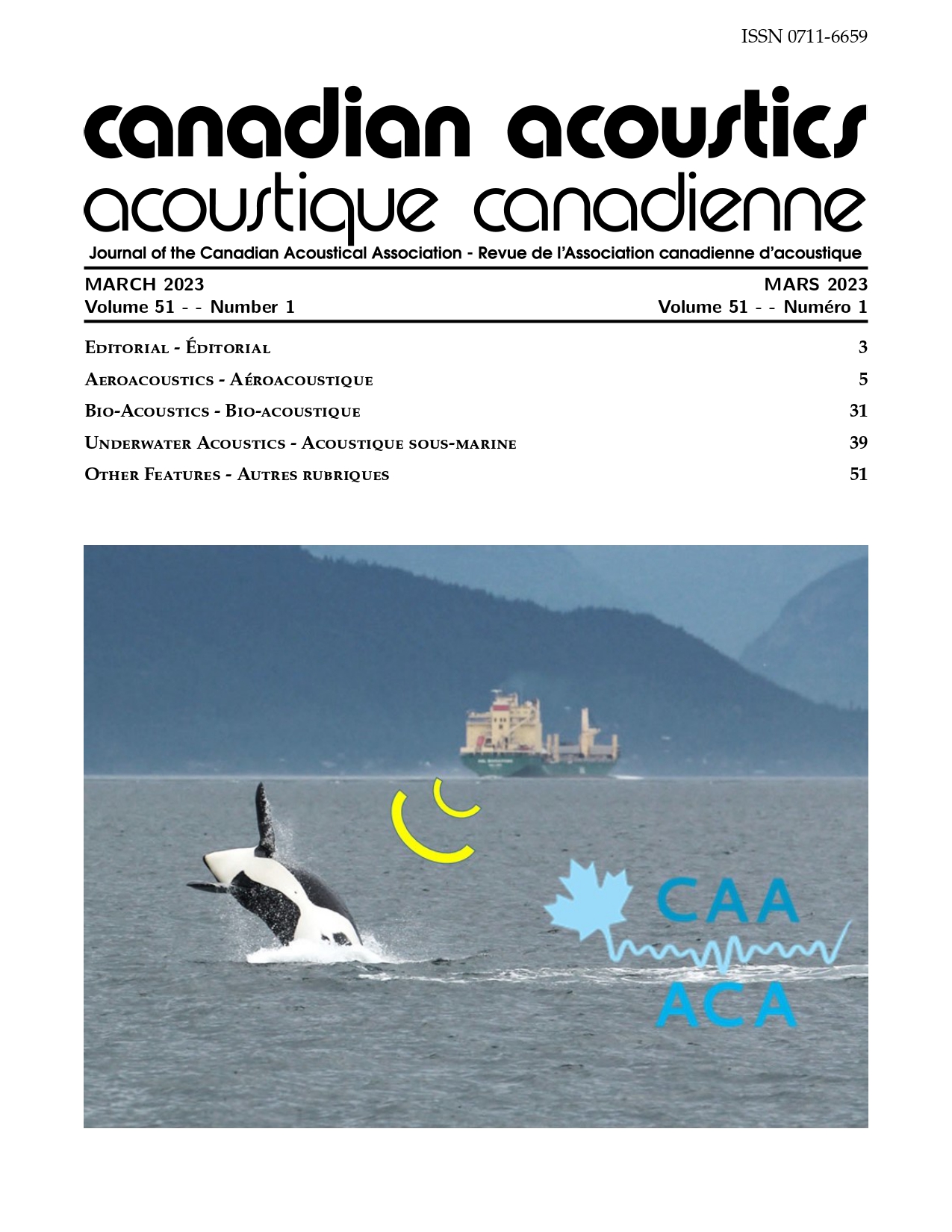L'effet des niveaux d'ouverture de la bouche sur les paramètres acoustiques du signal vocal
Mots-clés :
niveaux d'ouverture de la bouche, fréquence fondamentale, fréquences des formants, jitter, shimmer, rapport harmoniques/bruit, voyelle /a/Résumé
Cette étude examine l'effet de trois niveaux différents d'ouverture de la bouche sur : la fréquence fondamentale, le « jitter », le « shimmer », le rapport harmoniques/bruit, la fréquence du premier formant, la fréquence du second formant et le rapport des deux premiers formants lors de la production de la voyelle /a/. Une stratégie d'échantillonnage aléatoire simple a été utilisée pour recruter 36 participants. Au total, 18 femmes et 18 hommes âgés de 18 à 29 ans ont été recrutés. Les participants ont soutenu la voyelle /a/ pendant 7 secondes. La première et la dernière seconde de la voyelle ont été omises afin d'éliminer du signal audio l'effet d'initiation et de terminaison de la voyelle, et les 5 secondes du milieu ont donc été analysées pour en déduire les paramètres acoustiques. Sept caméras infrarouges ont enregistré l'ouverture de la bouche et les mouvements de la tête. Les résultats ont montré que le niveau d'ouverture de la bouche n'a d'effet que sur la fréquence fondamentale (p=0,009<0,05), le shimmer (p=0,033<0,05) et la fréquence du premier formant (p=0,004<0,05). Une posture de mâchoire ouverte place le larynx dans une position plus basse, ce qui entraîne une phonation plus détendue qui réduit la fréquence fondamentale et augmente le shimmer. Le niveau d'ouverture de la bouche a une relation inverse avec la fréquence du premier formant.
Fichiers supplémentaires
Publié-e
Comment citer
Numéro
Rubrique
Licence
Author Licensing Addendum
This Licensing Addendum ("Addendum") is entered into between the undersigned Author(s) and Canadian Acoustics journal published by the Canadian Acoustical Association (hereinafter referred to as the "Publisher"). The Author(s) and the Publisher agree as follows:
-
Retained Rights: The Author(s) retain(s) the following rights:
- The right to reproduce, distribute, and publicly display the Work on the Author's personal website or the website of the Author's institution.
- The right to use the Work in the Author's teaching activities and presentations.
- The right to include the Work in a compilation for the Author's personal use, not for sale.
-
Grant of License: The Author(s) grant(s) to the Publisher a worldwide exclusive license to publish, reproduce, distribute, and display the Work in Canadian Acoustics and any other formats and media deemed appropriate by the Publisher.
-
Attribution: The Publisher agrees to include proper attribution to the Author(s) in all publications and reproductions of the Work.
-
No Conflict: This Addendum is intended to be in harmony with, and not in conflict with, the terms and conditions of the original agreement entered into between the Author(s) and the Publisher.
-
Copyright Clause: Copyright on articles is held by the Author(s). The corresponding Author has the right to grant on behalf of all Authors and does grant on behalf of all Authors, a worldwide exclusive license to the Publisher and its licensees in perpetuity, in all forms, formats, and media (whether known now or created in the future), including but not limited to the rights to publish, reproduce, distribute, display, store, translate, create adaptations, reprints, include within collections, and create summaries, extracts, and/or abstracts of the Contribution.


